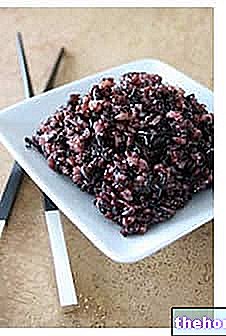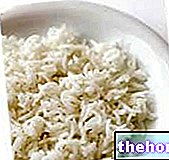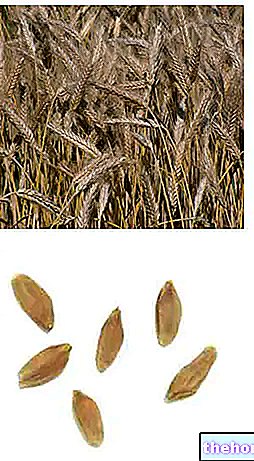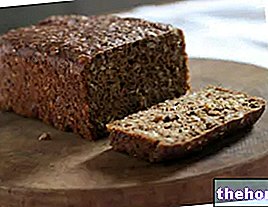Sorghum
When it comes to sorghum (also said Broom Corn) refers to a group of cereal species belonging to the genus Sorghum and to the family of Poaceae (Grasses); among these, the best known, because it is intended for human consumption, is the vulgar. The binomial nomenclature of sorghum intended for human nutrition is Sorghum vulgare.

Compared to today, the cultivation of sorghum was much more important in the past; this is justified by the fact that, once, agricultural technologies did not allow for a "sufficiently efficient irrigation and, unlike many others, this plant was able to resist drought brilliantly. Today, this crop has been largely replaced by corn, even if, in Somalia and Eritrea, it is still a primary source of income.
As can be deduced from what has been said so far, sorghum can have numerous applications. The one intended for human consumption is reduced to flour and destined for bread making. On the other hand, it seems that its frequent and systematic consumption can increase the chances of hepatocarcinoma due to the "high quantity of a" cyanogenic glucoside "responsible for the release of hydrogen cyanide. Some, however, argue that this poisonous characteristic can be completely inactivated by means of the water maceration of the seeds.
Sorghum flour
Sorghum flour does NOT contain gluten, therefore it lends itself to the diet of celiacs (gluten-free). On the other hand, it is always a good idea to check the label of the product which, if processed in mixed establishments, could become contaminated with gluten and becoming unsuitable for celiac disease.
Sorghum flour, also called "durra flour", is clear, yellowish white in color. To the touch it is fine and has a slight hygroscopy (it absorbs humidity from the environment). The starch grains appear similar to those of maize, a cereal with which sorghum shares a large part of the nutritional profile.
The flour is used as a base for bread making in Africa, in certain places in South Asia and in some countries in Central America (to produce products similar to wraps, as it does NOT rise). There are also various parallel applications, such as the manufacture of ethyl alcohol or a kind of beer (the latter, in Eritrea). In Italy, sorghum flour is almost completely unknown (even if it is grown in small quantities) and can be mixed with wheat flour to create low-strength doughs (2 parts of wheat and 1 part of sorghum).
Sorghum flour has been frequently used for the illicit manipulation of wheat flours; on the other hand, such counterfeiting is easily recognizable with a microscopic analysis of the starch granules.
Sorghum flour is readily available from organic, macrobiotic, vegan, etc. food retailers. It is found mainly in integral form and, assuming the absence of hydrocyanic acid for granted, it would be interesting to understand how (at an industrial level) it is made totally harmless for man.
Other Cereals and Derivatives Amaranth Wheat starch Corn starch Rice starch Modified starch Oat starch Bulgur Whole grains Corn Flakes Crackers Oat bran Bran Cus cus Amaranth flour Oat flour Buratto flour Spelled flour Buckwheat flour Corn flour Corn flour Millet Barley flour Quinoa flour Small spelled flour (Enkir) Rice flour Rye flour Sorghum flour Flour and semolina Whole wheat flour Manitoba flour Pizza flour Spelled Rusks Focaccia Nuts Wheat or wheat Wheat germ Burnt wheat Buckwheat Breadsticks Oat milk Rice milk Corn Maizena Malt Millet Muesli Barley Stale bread Unleavened bread and Pita Bread Carasau bread Egg pasta Rice pasta Wholemeal pasta Piadina Small spelled Pizza Pop corn Baked goods Quinoa Rice Basmati rice Converted rice White rice Rice Wholemeal Parboiled Rice Puffed Rice Venus Rice Rye and Horned Rye Semolina Semolina Sorghum Spaghetti Spelled Teff Tigelle Triticale OTHER ARTICLES CEREALS AND DERIVATIVES Categories Food Alcoholics Meat Cereals and derivatives Sweeteners Sweets Offal Fruit Dried fruit Milk and derivatives Legumes Oils and fats Fish and fishery products Salami Spices Vegetables Health recipes Appetizers Bread, Pizza and Brioche First courses Second courses Vegetables and Salads Sweets and Desserts Ice creams and sorbets Syrups, liqueurs and grappas Basic Preparations ---- In the Kitchen with Leftovers Carnival Recipes Christmas Recipes Dietary Recipes Light Recipes Woman's Day, Mother's Day, Dad's Day Functional Recipes International Recipes Easter Recipes Recipes for Celiacs Recipes for Diabetics Holiday Recipes Valentine's Day Recipes Vegetarian Recipes Protein Recipes Regional Recipes Vegan Recipes
















.jpg)











